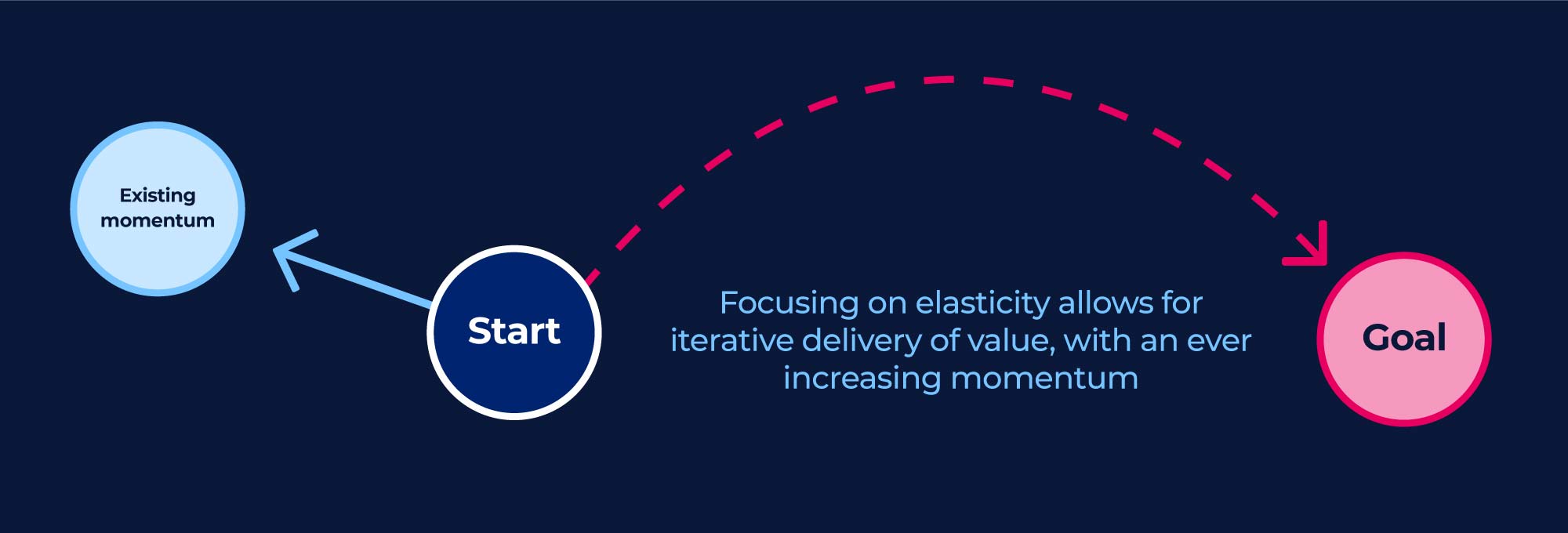Do you have a question? Want to learn more about our products and solutions, the latest career opportunities, or our events? We're here to help. Get in touch with us.
Do you have a question? Want to learn more about our products and solutions, the latest career opportunities, or our events? We're here to help. Get in touch with us.
We've received your message. One of our experts will be in touch with you soon.

We’re in a world of increasing opportunity and technical capability. This means that reinvention and transformation have become infinitely more plausible. Unfortunately, getting to an outcome has become an exponentially daunting and nuanced challenge that can be overshadowed by complexity, doubt, and surprises.
What if the first step we took defined the ease and speed of the journey?
Let’s explore why this first step is rarely the most intuitive one to take and how visionaries can help define both the destination as well as the path forward.
If you’ve been involved in challenging innovation or transformation projects, some of the following may feel strangely familiar:
In each of these situations, the initiative likely entered what's known as the ‘valley’.
Great transformation is true change; it feels smooth and inspirational and is something that creates behaviour in the teams which live beyond the tools, technologies, and deliverables of the initiative.
Most importantly, great transformation is adaptable and has an exit strategy. It can be partially complete while already delivering the bulk of its intended value.
Most of us know the three key ingredients of a project and are probably pretty confident with them:
Smaller, more visible steps through agile or lean approaches fundamentally allow teams to run into complex and challenging situations much more quickly, with a lower cost of failure.
What small steps don’t do is avoid some of those invisible challenges in the first place.
Design thinking, prototyping, and problem-solving tools have made it easy to visualise and clarify objectives. A clear shared understanding and buy-in into the end state allow team members to focus their energy on the future.
What a shared vision doesn’t do is help to clarify the path through many of the decisions that might need to be made to get there.
Planning tools, programme dashboards, and a focus on recognising the progress and effort that a team is putting in towards a goal can help to inject energy and confidence in teams and to key stakeholders.
What measurement and recognition often can’t see is the comparison to alternate routes not travelled.
With the right ingredients in place, how can we avoid the pitfalls?
Let's think of transformation as an intentionally new direction. Challenges are sometimes like an elastic force that can stretch, snap, or resist and pull us backwards for a variety of reasons. Obviously, our aim is to stretch as fast as possible without breaking or being pulled backwards.

It’s thinking like this that helps us to make the first few steps clear. They will often feel like sideways steps rather than forward ones towards the ultimate goal but they are essential to success.
So, rather than work against the resistance, embrace it.
Focus on aspects that increase elasticity. Remove procedural barriers that teams are being constrained by and focus on capabilities and technologies that are ‘enablers' of acceleration instead of ‘features’ within the future product.
Then, leverage existing momentum instead of pulling against it. Identify the core value of your current systems, intellectual property (IP), and solutions, and build adjacent to this core IP to retain value and from a solid base to actively reduce reliance on the resistive.

Doug Ollivier has more than 15 years’ experience establishing people-first technology strategies through design thinking and customer engagement. He also has experience in cloud ecosystem design, product strategy, and new product development.